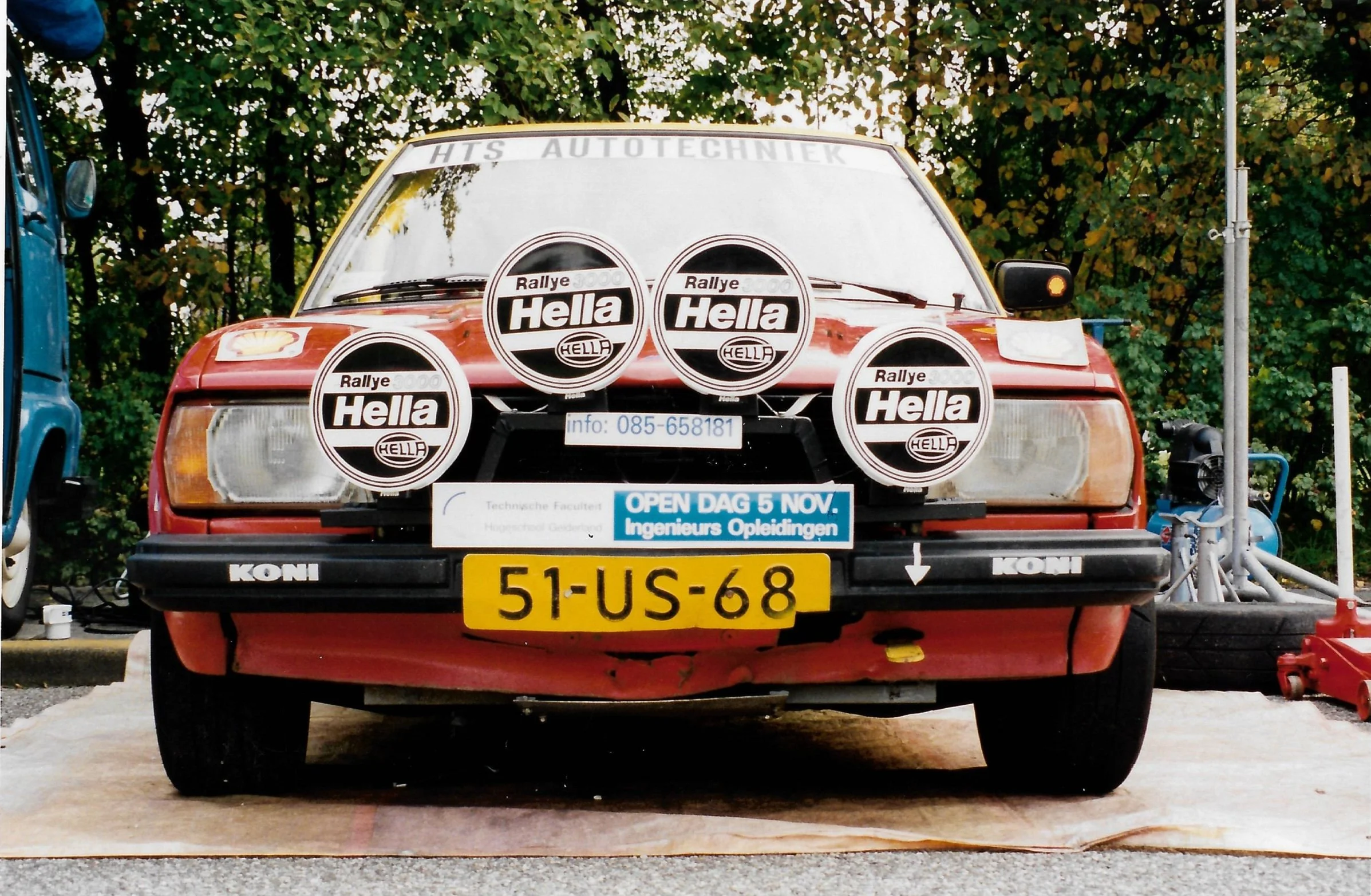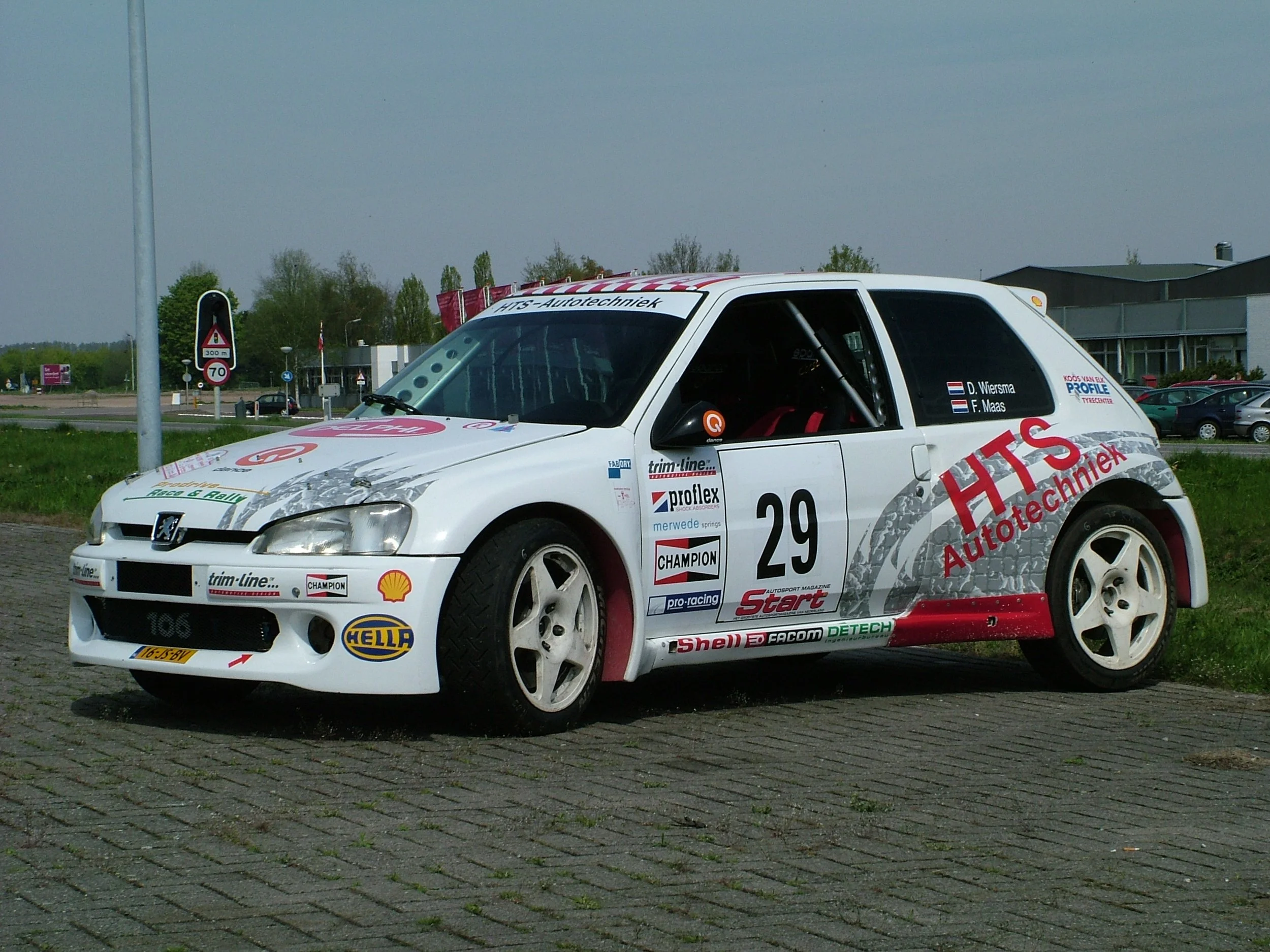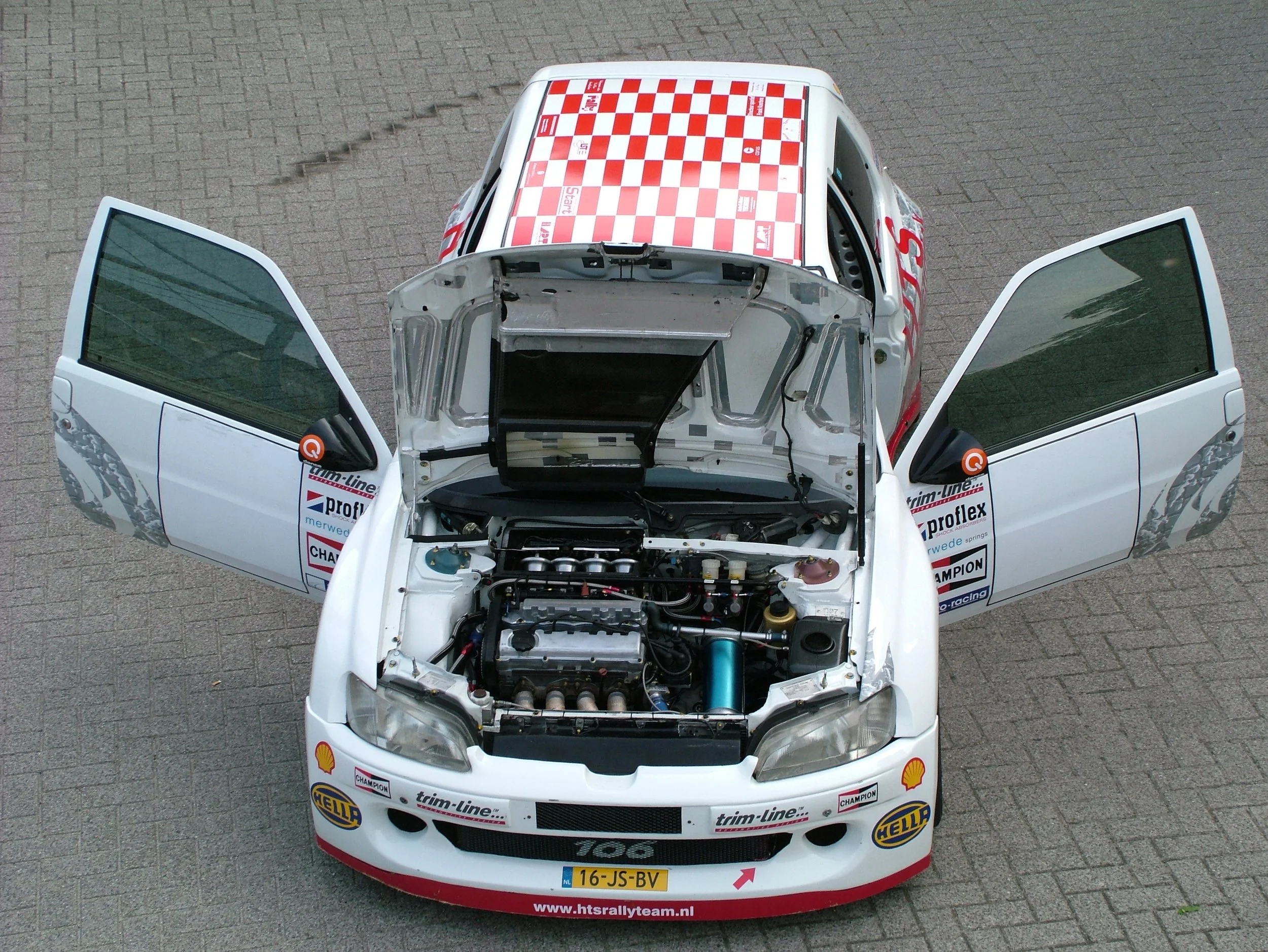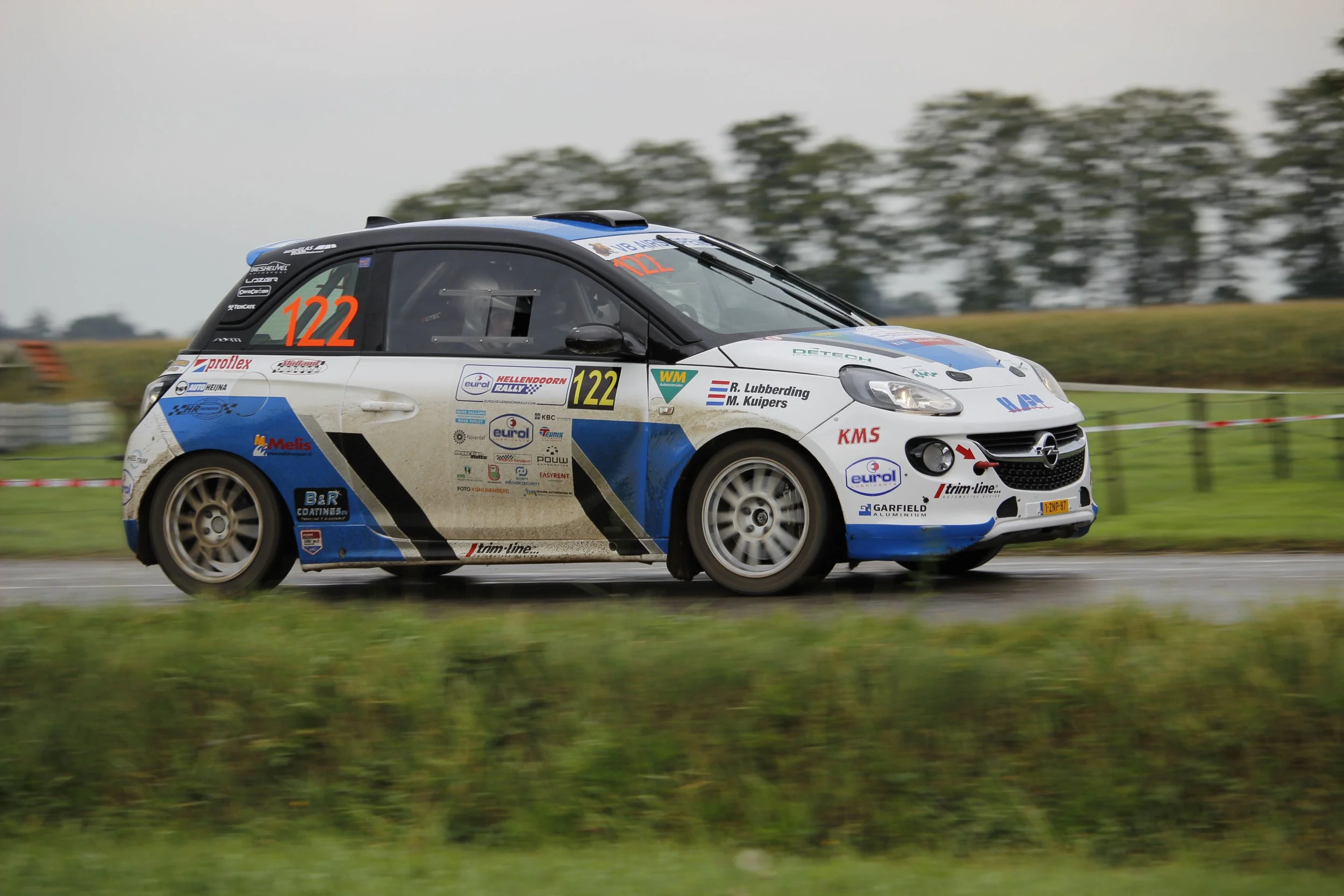
Racing Through Time:
The Story of HART
Since 1991, the HAN Automotive Rally Team has been a place where students turn their passion for motorsports into real-world experience. What began as a small initiative has grown into a competitive rally team, overcoming challenges both on and off the track. Through innovation, teamwork, and determination, HART has built a legacy of engineering excellence and racing success.
Now, take a ride through the history of HART and discover how we became the team we are today!
The HAN Automotive Rally Team has a rich and eventful history, dating back to October 1991, when it was officially established at HTS Autotechniek in Apeldoorn. The team's primary goal was to gain technical and organizational experience in motorsports. When the institute later moved to Arnhem in 1996, HART followed, opening up new possibilities with a dedicated workspace and better facilities.
Despite these setbacks, the team refused to quit. Instead of building another Ascona, they acquired an Opel Manta GSI, a car that had been fully prepped by Biesheuvel Autotuning. Around the same time, HTS Autotechniek relocated to Arnhem in 1996, and with it, HART moved to a new facility. This transition was a turning point for the team, as they now had access to a professional workshop, complete with a car lift and dedicated workspaces. These new resources allowed them to push their development even further.
Throughout 1997 and 1998, the team participated in multiple rallies with respectable results. However, after years of racing, the Manta GSI was starting to show its age, and the team began searching for a new rally car to continue their journey.
The Early Years: 1992-1998
The team’s first major project was preparing an Opel Ascona I 2000 for rally competition. It was a challenging task that required extensive modifications, including strengthening the chassis, upgrading the engine, and improving the suspension for better handling. After a year of dedicated work, the car was finally ready for competition in 1993. HART entered its first rally sprints, and despite being a new team, they quickly proved their potential by securing 3rd place in Hulst. However, motorsport is unpredictable, and after a strong start at the Twente Rallysprint, the Ascona crashed into a tree, bringing their season to an unexpected halt.
Determined to keep going, the team rebuilt their car for the 1994 season, once again choosing an Opel Ascona, making use of parts from the previous vehicle. Their best result that year was 22nd place in the Waalhaven Sprint in Rotterdam. In 1995, they returned to the Hulst Rallysprint, but disaster struck again when the car lost control at 150 km/h, crashing into a ditch. Thankfully, the crew escaped unharmed, but the Ascona was beyond repair.
In 2003, HART acquired what would become one of its most iconic and technically advanced vehicles: a Peugeot 106 Maxi Kit Car, built by Peugeot Sport. This factory rally car was equipped with a 235 hp engine, a sequential gearbox, and could accelerate from 0 to 100 km/h in just 4 seconds. It was, without a doubt, the fastest car HART had ever owned. The 106 Maxi raised the bar across the board. Technology, sponsorship, and team management all reached a higher level. However, the car wasn’t without issues. Repeated technical problems interrupted rally sprints, and a crash caused by a misplaced concrete block resulted in the car flipping onto its roof. Luckily, the crew walked away unharmed, but the damage was extensive.
By 2004, the team had improved both the car and their own technical capabilities. The 106 Maxi began to perform more reliably, and the 2005 season turned out to be one of the most successful in HART history. The team secured two 1st place finishes, with the 106 completing every rally sprint it entered. This was a proud moment that showed how far the team had come.
Unfortunately, celebration quickly turned to tragedy. Shortly after the winterstop, the 106 caught fire during a test drive, leaving both occupants with serious burns. The car was completely destroyed. Despite the emotional and physical toll of the accident, HART once again showed its strength by choosing to continue.
After nearly a year without a rally car, the team returned in 2007 with a Ford Puma S1600, another high-performance factory-built vehicle. The Puma had its own set of challenges. Technical problems were frequent in the beginning, but the team’s growing knowledge and dedication helped them turn it into a reliable and competitive machine. Over the next three years, the Puma delivered strong results and added new trophies to the HART cabinet. Yet by the end of 2009, the team recognized it was time for a new chapter. The Puma was sold, and attention turned to finding a car that offered more flexibility for development and in-house engineering.
A Decade of Change and Challenge: 1999–2009
By 1999, the HAN Automotive Rally Team was ready for a fresh start. With the Opel Manta GSI nearing the end of its life, the team shifted focus to a completely different car: a Renault Mégane Coupé 2.0.
Originally designed for endurance racing at Spa-Francorchamps, the car was never meant for rally stages. Converting it into a competitive rally vehicle required a huge effort from the team, both technically and organizationally. Over the next three years, the Mégane competed in various rally sprints. However, the car slowly began to lose its structural stiffness, an inevitable consequence of the rough rally environment. Despite this, the Mégane helped the team gain valuable experience, both on the road and in the workshop.
That same year, HART also received a new service bus, which was a major asset during rally events. It allowed the team to transport tools, parts, and gear more efficiently and marked another step in the team’s growing professionalism. But as the Mégane reached the end of its useful life, the team knew it was time for something more advanced something that could match their rising ambitions.
Engineering Progress and Pushing Limits: 2010–2019
With the sale of the Ford Puma S1600 at the end of 2009, the HAN Automotive Rally Team entered a new chapter: one focused on learning through self-development. In early 2010, HART acquired a Peugeot 206 Cup car from Poland. Unlike previous factory-prepared cars, this new car was chosen specifically for its flexible homologation package, giving the team more freedom to experiment and innovate. This marked a shift in mindset, the goal was no longer just to race, but also to build, adapt, and engineer the car from the ground up.
The 206 brought plenty of potential. It came equipped with large brakes, a dogbox transmission, Super 1600 suspension, and many custom components. The team embraced the opportunity to dive deep into vehicle dynamics, fuel systems, and reliability improvements. One of the major technical changes was switching to E85 (ethanol) fuel, a move that aligned with the team’s experimental spirit. Over the next five seasons, the 206 became a testing ground for student innovation, with each new group of members continuing the development process.
Despite these achievements, the road wasn’t without its bumps. In August 2013, tragedy struck when the team’s service bus, along with the HTS Racing Team’s city bus, was destroyed in a fire caused by arson. The damage was devastating, both emotionally and financially. The bus was not insured, making the loss even harder to absorb. Still, the team pushed on. Through hard work and support from the university and sponsors, HART was able to stay on its feet and begin planning its next move.
By the end of 2014, the decision was made to sell the Peugeot 206 and invest in a new vehicle. This time, the team looked to Germany and imported an Opel Adam Cup car. Built by Opel Motorsport for the German Cup series, the Adam featured a naturally aspirated 1.6L engine, Sadev sequential gearbox, upgraded suspension, and larger brakes. Though modest in power at around 140 horsepower, the Adam offered incredible reliability, making it a perfect base for long-term development and student training.
The new car marked another turning point, not only for the team but also for the identity of the program. Around the same time, HTS Autotechniek officially became HAN Automotive, and the team followed suit, rebranding itself as the HAN Automotive Rally Team, while proudly keeping the HART name. With a new car and a new name, the team entered a period of growth and stability.
2nd 2017
Over the next several seasons, the Opel Adam proved to be a solid performer. The team fine-tuned the setup, gained valuable experience, and competed in multiple short rally events across the Netherlands. In 2018, HART reached a major milestone by winning 1st place in the Dutch Rally Championship, a moment that validated years of hard work and perseverance. However, just a year later, the Adam suffered severe front-end damage in a crash, bringing its career to an abrupt end.
Despite the setback, HART remained undeterred. With lessons learned and momentum on their side, the team sold the Adam and set out in search of a new challenge. In 2019, they welcomed their next project: a Renault Clio 3 RS. The car started out nearly stock, but it quickly became the foundation for a new era of hands-on development. Since then, it has been continuously upgraded and refined by each new generation of students, and it remains HART’s competition car to this day, carrying the team’s legacy forward into the modern rally scene.












